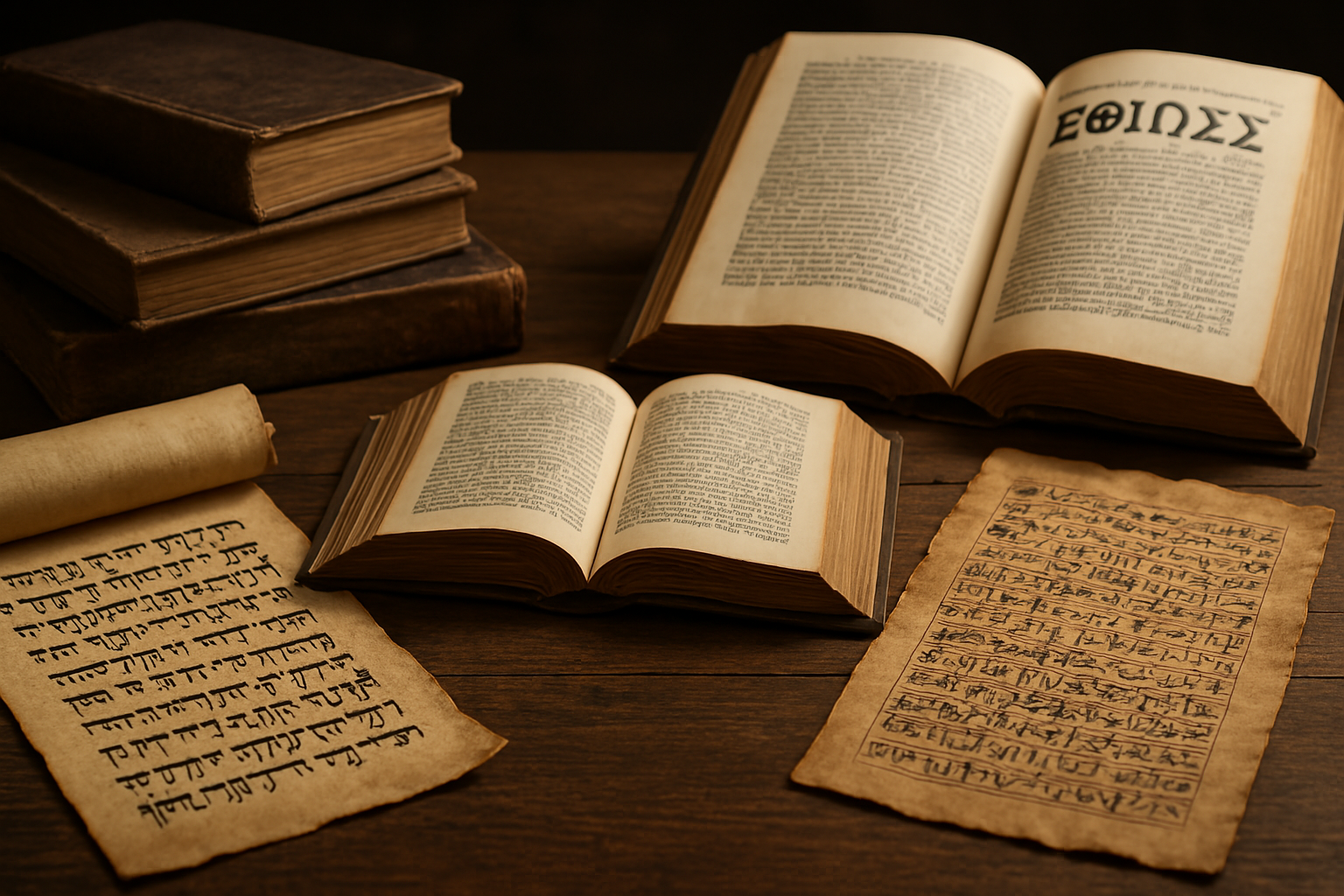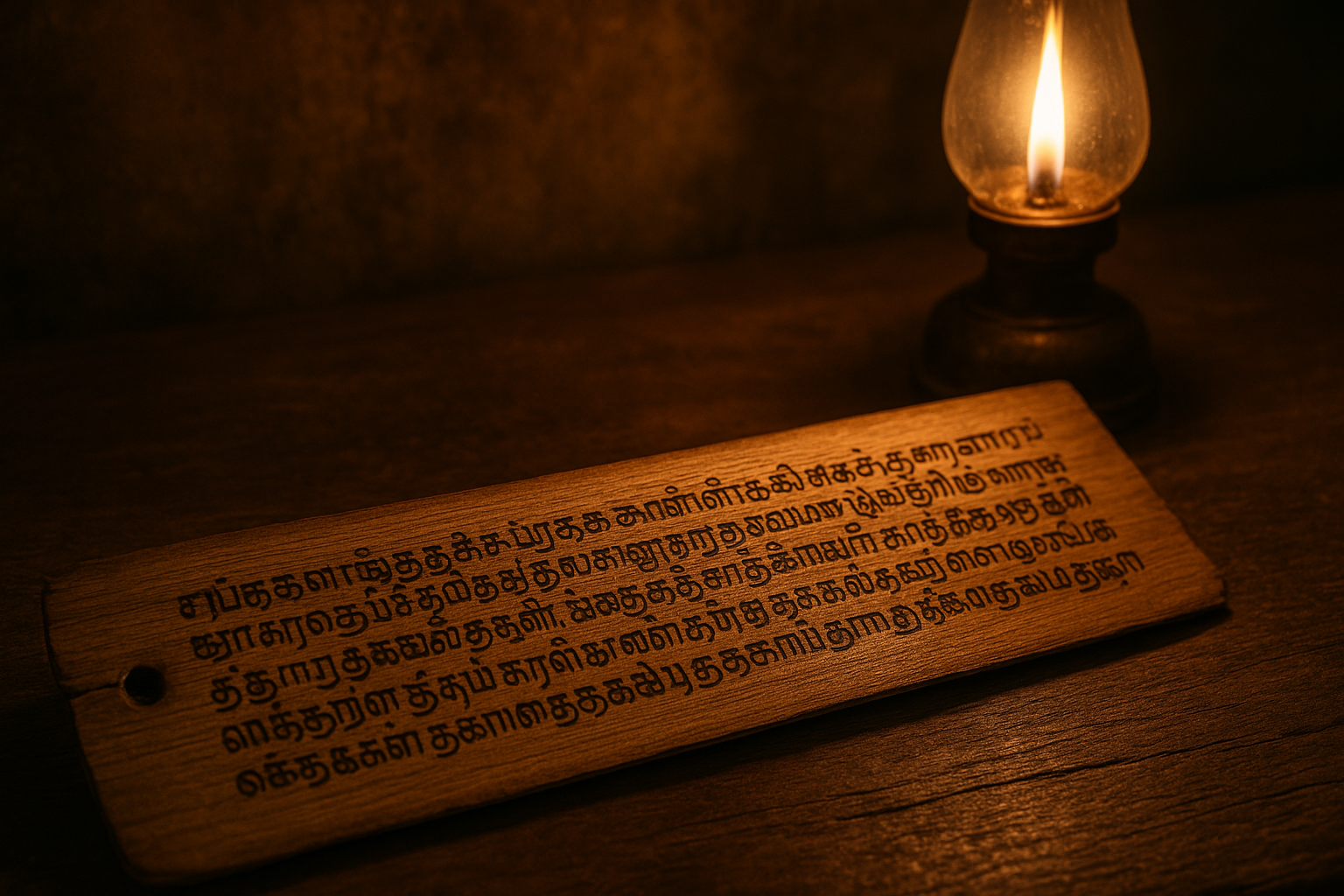Top 10 Oldest Languages in the World
Language is a powerful bridge that connects generations, cultures, and civilizations. Throughout history, certain languages have stood the test of time, surviving wars, migrations, and transformations
Language is a powerful bridge that connects generations, cultures, and civilizations. Throughout history, certain languages have stood the test of time, surviving wars, migrations, and transformations

Language is a powerful bridge that connects generations, cultures, and civilizations. Throughout history, certain languages have stood the test of time, surviving wars, migrations, and transformations. In this article, we explore the Top 10 Oldest Languages in the World that continue to impact our modern societies and reveal the richness of human history. 📜

Ancient Tamil script inscribed on palm leaf manuscript beside an oil lamp on a wooden table.
Tamil is widely considered the oldest living language. Originating over 2300 years ago, it is still actively spoken by over 75 million people, especially in Tamil Nadu, Sri Lanka, and parts of Southeast Asia. Its classical literature, such as the Sangam poems, reflects a deep cultural and historical legacy. 🗣️
Sanskrit, often called the language of the gods, was developed in ancient India and has influenced many modern languages like Hindi, Bengali, and Marathi. Though not widely spoken today, it remains essential in Hindu religious ceremonies, literature, and yoga texts. 📚
Greek has been spoken since at least the 9th century BCE. Ancient Greek was the language of philosophy, mathematics, and early science, spoken by great thinkers like Aristotle, Plato, and Socrates. Modern Greek, although evolved, still retains its roots. 🏛️
Hebrew was revived from a liturgical language into a modern spoken tongue in the 19th century. Today, it is the official language of Israel. Its ancient version is the primary language of the Old Testament in the Bible. 📖
Mandarin Chinese evolved from Old Chinese, which dates back over 3000 years. It is the most spoken language in the world today. The Chinese script, especially traditional characters, connects directly to ancient roots. 🧧
Aramaic was a major language during the Assyrian and Babylonian empires and was widely used across the Middle East. It is also believed to be the language spoken by Jesus Christ. Today, it is preserved by small communities around the world. ⛪
Latin was the official language of the Roman Empire. While no longer spoken conversationally, it has deeply influenced modern European languages and is still used in law, science, and by the Vatican. 🏛️
Arabic originated in the Arabian Peninsula in the 6th century and spread rapidly with the rise of Islam. The Quran is written in Classical Arabic. Today, it is spoken by over 400 million people globally. 🌙
Persian, also known as Farsi, dates back to ancient Persia and was widely used in poetry, literature, and governance. It is still spoken in Iran, Afghanistan, and Tajikistan, and has influenced many cultures. 📝
Ancient Egyptian was used in hieroglyphics and was the language of the Pharaohs. While no longer spoken in its original form, it evolved into the Coptic language, which is still used in Egyptian Christian liturgies. 🕊️
These ancient languages aren't just tools for communication—they are symbols of identity, history, and culture. They laid the foundations for many modern languages and continue to influence literature, religion, and science. Learning about them is like traveling back in time. ⏳
The world’s oldest languages are treasures of human civilization. From the sacred syllables of Sanskrit to the poetic verses of Persian, they all tell stories that span centuries. Whether still spoken or preserved through texts, these languages remain key to understanding our past—and shaping our future. 🌍
📩 Enjoyed this article? Share it with fellow language lovers and let us know which ancient language you’d love to learn!
Writer and content creator
Log in to share your thoughts and engage with other readers.